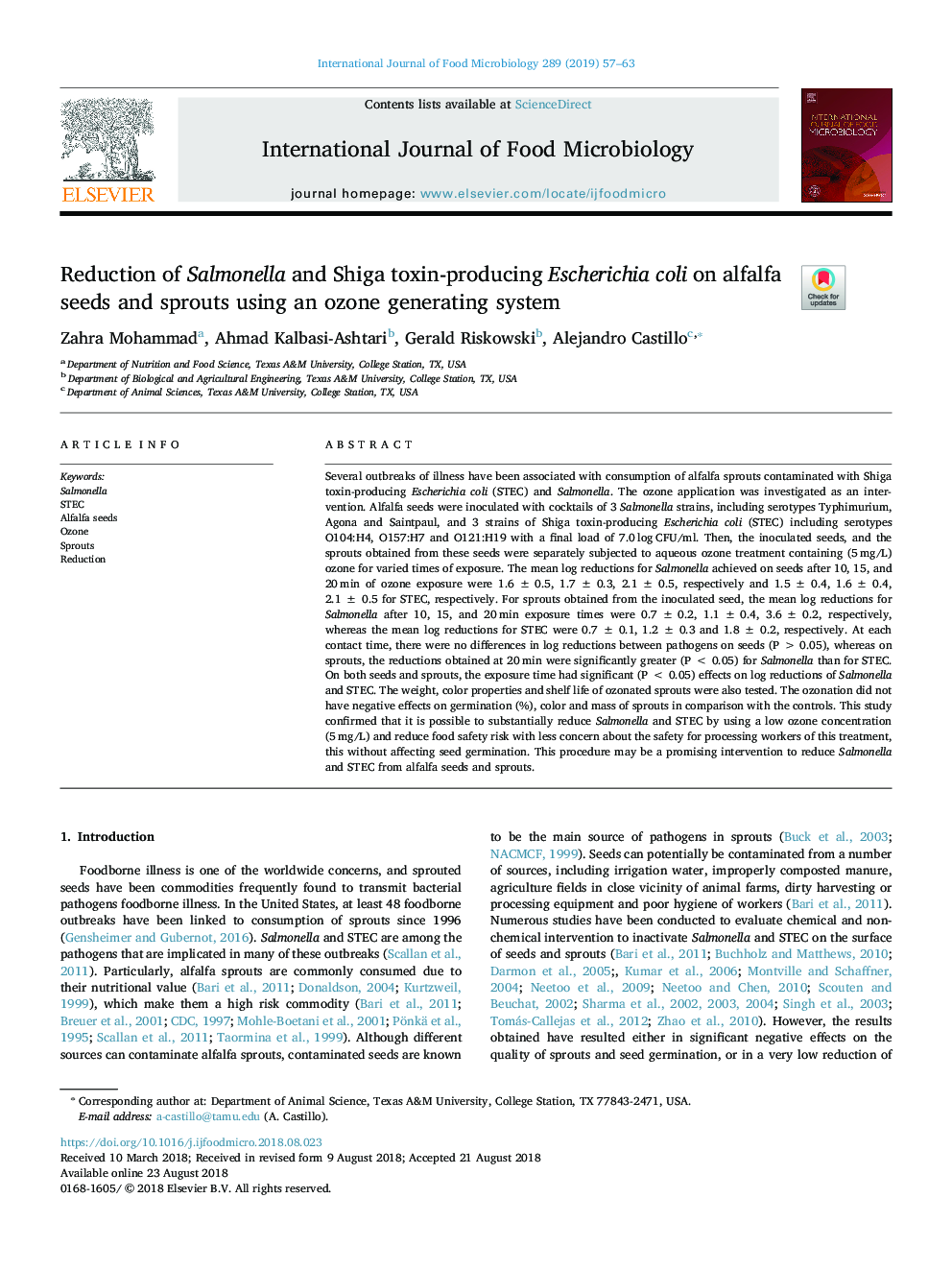| Article ID | Journal | Published Year | Pages | File Type |
|---|---|---|---|---|
| 8965861 | International Journal of Food Microbiology | 2019 | 7 Pages |
Abstract
Several outbreaks of illness have been associated with consumption of alfalfa sprouts contaminated with Shiga toxin-producing Escherichia coli (STEC) and Salmonella. The ozone application was investigated as an intervention. Alfalfa seeds were inoculated with cocktails of 3 Salmonella strains, including serotypes Typhimurium, Agona and Saintpaul, and 3 strains of Shiga toxin-producing Escherichia coli (STEC) including serotypes O104:H4, O157:H7 and O121:H19 with a final load of 7.0â¯logâ¯CFU/ml. Then, the inoculated seeds, and the sprouts obtained from these seeds were separately subjected to aqueous ozone treatment containing (5â¯mg/L) ozone for varied times of exposure. The mean log reductions for Salmonella achieved on seeds after 10, 15, and 20â¯min of ozone exposure were 1.6â¯Â±â¯0.5, 1.7â¯Â±â¯0.3, 2.1â¯Â±â¯0.5, respectively and 1.5â¯Â±â¯0.4, 1.6â¯Â±â¯0.4, 2.1â¯Â±â¯0.5 for STEC, respectively. For sprouts obtained from the inoculated seed, the mean log reductions for Salmonella after 10, 15, and 20â¯min exposure times were 0.7â¯Â±â¯0.2, 1.1â¯Â±â¯0.4, 3.6â¯Â±â¯0.2, respectively, whereas the mean log reductions for STEC were 0.7â¯Â±â¯0.1, 1.2â¯Â±â¯0.3 and 1.8â¯Â±â¯0.2, respectively. At each contact time, there were no differences in log reductions between pathogens on seeds (Pâ¯>â¯0.05), whereas on sprouts, the reductions obtained at 20â¯min were significantly greater (Pâ¯<â¯0.05) for Salmonella than for STEC. On both seeds and sprouts, the exposure time had significant (Pâ¯<â¯0.05) effects on log reductions of Salmonella and STEC. The weight, color properties and shelf life of ozonated sprouts were also tested. The ozonation did not have negative effects on germination (%), color and mass of sprouts in comparison with the controls. This study confirmed that it is possible to substantially reduce Salmonella and STEC by using a low ozone concentration (5â¯mg/L) and reduce food safety risk with less concern about the safety for processing workers of this treatment, this without affecting seed germination. This procedure may be a promising intervention to reduce Salmonella and STEC from alfalfa seeds and sprouts.
Related Topics
Life Sciences
Agricultural and Biological Sciences
Food Science
Authors
Zahra Mohammad, Ahmad Kalbasi-Ashtari, Gerald Riskowski, Alejandro Castillo,
